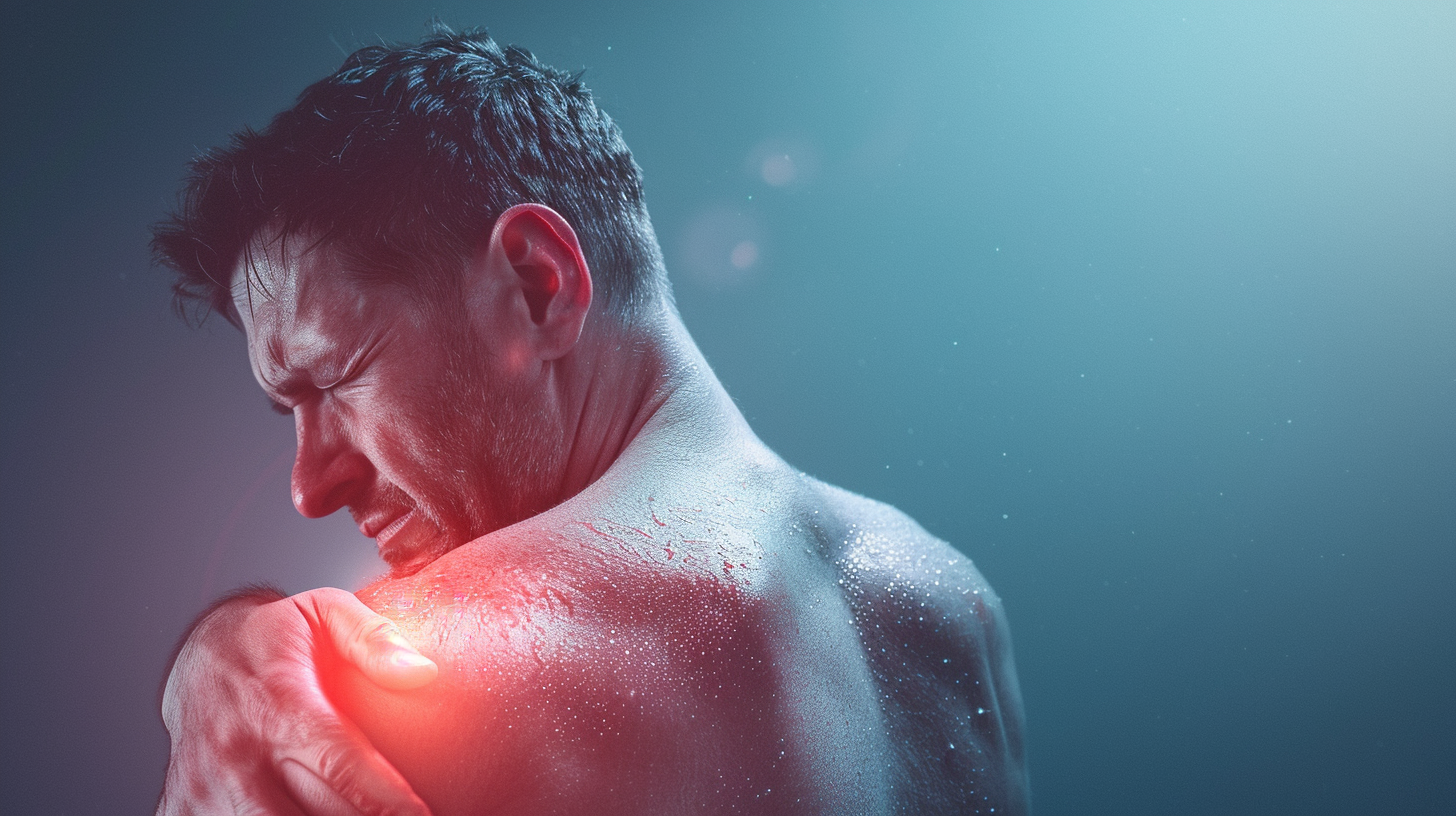Wave Goodbye to Your Shoulder Pains!
Shoulder pain can show up in many forms – whether you're reaching for the top shelf, trying to find a comfortable sleeping position, or dealing with the aftermath of an injury. This pain can range from a dull ache to a feeling of immobility.
Shoulder pain can stem from various causes, from the temporary discomfort of a pulled muscle to the severe bone-on-bone friction of arthritis. At Integrative Physio Approach, we offer natural pain management modalities to quickly relieve your shoulder pain.
Why Am I Experiencing Shoulder Pain?
The shoulder joint, with its extensive range of motion, is susceptible to injury and pain. As a "ball-and-socket" joint, the head of the upper arm bone (humerus) fits into the shoulder blade (scapula). The humerus is cushioned by cartilage, preventing the bones from rubbing together. Additionally, fluid-filled sacs called "bursae" protect the tendons from rubbing against the bones. The rotator cuff tendons attach the shoulder bones to muscles.
When any part of this intricate system malfunctions, pain can result. The type of pain depends on the cause. Impingement pain typically occurs when raising the arm, while degenerative shoulder pain creates persistent aches. Acute injuries can cause sudden, intense pain, making shoulder movement difficult.
A Common Injury – Rotator Cuff Tears
The rotator cuff consists of muscles and tendons around the shoulder joint. Rotator cuff injuries can occur due to repetitive overhead motions from sports like tennis or jobs like carpentry. Symptoms include a dull ache deep in the shoulder, arm weakness, difficulty reaching behind your back, and sleep disturbances due to pain.
At Integrative Physio Approach, we use natural, non-invasive methods to relieve shoulder pain and heal rotator cuff injuries. While severe rotator cuff tears may require surgery, physical therapy can be equally effective. According to the American Physical Therapy Association, a study from Finland found that physical therapy alone produces results equal to those of arthroscopic surgery and open surgical repair for nontraumatic rotator cuff tears. This study followed 167 patients treated with physical therapy, demonstrating that conservative treatment should be the primary approach for this condition.
Our therapists will conduct a physical evaluation and diagnostic tests to determine if you have a rotator cuff tear and design a personalized treatment plan for your needs.
What’s Causing My Shoulder Pain?
The shoulder joint's complexity can lead to various pain-causing conditions. Common causes of shoulder pain include:
-
Impingement typically occurs due to abnormal movement and tracking of the humeral head when lifting your arm overhead. Pain usually starts when lifting your arm at or above 90 degrees.
-
The two main forms of arthritis that affect the shoulder are osteoarthritis and rheumatoid arthritis. Osteoarthritis results from significant "wear and tear" of the cartilage in the shoulder joint, often due to age or overuse. Rheumatoid arthritis occurs when the immune system attacks the membranes surrounding the shoulder joint, causing pain and inflammation. Both types result in pain, loss of motion, shoulder muscle weakness, and difficulty performing daily tasks.
-
Tendinitis occurs when the shoulder joint is overused, typically due to a laborious job, overhead activity, or sport. Poor posture is a major contributor, altering the normal forces on the tendons and leading to tendon injury. This causes ongoing inflammation, resulting in swelling and painful impingement when raising your arm.
-
Also known as "adhesive capsulitis," frozen shoulder can occur if your arm has been in a cast or sling for a while or if you have been bedridden for an extended period. It results in a painful loss of motion in the shoulder, with a tightening of the shoulder joint that severely limits movement. Women between the ages of 40-60 and certain ethnicities are more predisposed to this condition.
-
The rotator cuff is comprised of four muscles, tendons, and soft tissue that surround the shoulder joint, guiding its movement. Injury, overuse, poor posture, or age can cause the rotator cuff to be partially or completely torn. Depending on the severity, surgery may be required, but physical therapy can often reduce pain and restore strength to compensate for a partial tear. If surgery is needed, physical therapy is crucial for pre and post-surgical rehabilitation to ensure a full recovery.
The good news is that physical therapy at our clinic can help you manage and overcome these conditions. Seeing a physical therapist is the best way to identify the cause and find effective relief.
